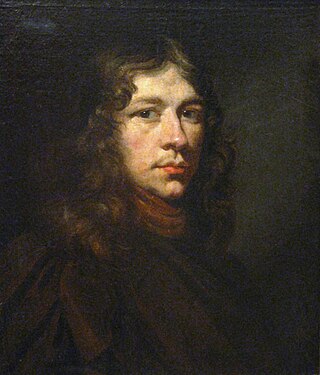
Jerzy (Georg) Daniel Schultz known also as Daniel Schultz the Younger was a prominent painter of the Baroque era, born and active in the Polish–Lithuanian Commonwealth. He painted many Polish and Lithuanian nobles, members of the royal family, local Patricians, such as the astronomer Johannes Hevelius; animals, and hunts. His work can be found at the Wawel Castle State Art Collections, the National Museum in Warsaw, the Stockholm National Museum, the Hermitage Museum, and at the Gdańsk National Museum.

Kazimierz Michał Władysław Wiktor Pułaski, anglicized as Casimir Pulaski, was a Polish nobleman, soldier, and military commander who has been called "The Father of American cavalry" or "The Soldier of Liberty".

Polish Americans are Americans who either have total or partial Polish ancestry, or are citizens of the Republic of Poland. There are an estimated 8.81 million self-identified Polish Americans, representing about 2.67% of the U.S. population, according to the 2021 American Community Survey conducted by the U.S. Census Bureau.

Casimir Pulaski Day is a local holiday officially observed in Illinois, on the first Monday of March in memory of Casimir Pulaski, a Revolutionary War cavalry officer born in Poland as Kazimierz Pułaski. He is praised for his contributions to the U.S. military in the American Revolution and known as "the father of the American cavalry".

Ignacy Jan Paderewski was a Polish pianist, composer and statesman who was a spokesman for Polish independence. In 1919, he was the nation's prime minister and foreign minister during which time he signed the Treaty of Versailles, which ended World War I.

Helena Modrzejewska, known professionally as Helena Modjeska, was a Polish-American actress who specialized in Shakespearean and tragic roles.

The Princes Czartoryski Museum – often abbreviated to Czartoryski Museum – is a historic museum in Kraków, Poland, and one of the country's oldest museums. The initial collection was formed in 1796 in Puławy by Princess Izabela Czartoryska. The Museum officially opened in 1878. It is now a division of the National Museum in Kraków.
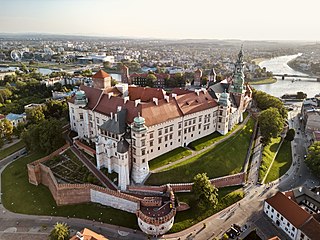
The Wawel Royal Castle and the Wawel Hill on which it sits constitute the most historically and culturally significant site in Poland. A fortified residency on the Vistula River in Kraków, it was established on the orders of King Casimir III the Great and enlarged over the centuries into a number of structures around an Italian-styled courtyard. It represents nearly all European architectural styles of the Medieval, Renaissance and Baroque periods.
Eugene Von Bruenchenhein (1910–1983) was an American self-taught artist from Milwaukee, Wisconsin. Over the course of fifty years, from the 1930s until his death in 1983, Von Bruenchenhein produced an expansive oeuvre of poetry, photography, painting, drawing and sculpture. His body of work includes over one thousand colorful, apocalyptic landscape paintings; hundreds of sculptures made from chicken bones, ceramic and cast cement; pin-up style photos of his wife, Marie; plus dozens of notebooks filled with poetic and scientific musings. Never confined to one particular method or medium, Von Bruenchenhein continually used everyday, discarded objects to visually explore imagined past and future realities.

Jan Styka was a Polish painter noted for producing large historical, battle-piece, and Christian religious panoramas. He was also illustrator and poet. Known also as a great patriotic speaker - his speeches were printed in 1915 under the French title L'ame de la Pologne.

Shelburne Museum is a museum of art, design, and Americana located in Shelburne, Vermont, United States. Over 150,000 works are exhibited in 39 exhibition buildings, 25 of which are historic and were relocated to the museum grounds. It is located on 45 acres (18 ha) near Lake Champlain.
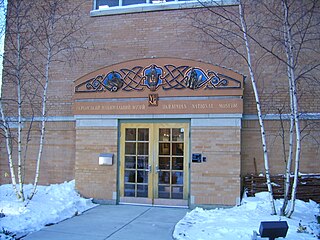
Ukrainian National Museum (UNM) is located in the historical Ukrainian Village neighborhood of Chicago, United States. It is home to a plethora of Ukrainian artifacts, artwork, musical instruments, and embroidered folk costumes among its growing collection.

The International Museum of Surgical Science is a museum located in the Gold Coast neighborhood of Chicago, Illinois. It is operated by The International College of Surgeons and features exhibits dealing with various aspects of Eastern and Western medicine. Dr. Max Thorek founded the International College of Surgeons (ICS) in 1935 and originally intended for the museum to highlight the many artifacts and manuscripts the college housed, but artifacts where later added strictly for the museums collection. The museum opened to the public on September 9, 1954. The museum's exhibits are displayed by theme or surgical discipline. Displays include photographs, paintings and drawings, sculpture, medical equipment, skeletons, medical specimens and historic artifacts. The library contains more than 5,000 rare medical texts.

Holy Trinity Church is a historic church of the Roman Catholic Archdiocese of Chicago located at 1118 North Noble Street. It is a prime example of the so-called 'Polish cathedral style' of churches, in both its opulence and grand scale. Along with such monumental religious edifices as St. Mary of the Angels, St. Hedwig's or St. John Cantius, it is one of the many Polish churches that dominate over the Kennedy Expressway in the Pulaski Park neighborhood of Chicago.

The Polish American Museum is located at 16 Belleview Avenue in Port Washington, New York, USA. It was founded on January 20, 1977. It features displays of folk art, costumes, historical artifacts and paintings, as well as bilingual research library with particular focus on achievements of the people of Polish heritage in America.

The Museum of John Paul II Collection in Warsaw, also known as the Porczyński Gallery or Carroll-Porczyński Collection, is a museum dedicated to its painting collection, which is housed in the building of the former stock exchange and Bank of Poland. The collection includes around 400 exhibits, mainly Old Masters and the Impressionists, along with some copies of masterpieces of European painting.
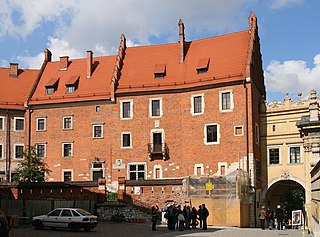
The John Paul II Cathedral Museum is a museum in Kraków, Poland. It is situated on Wawel Hill, between the Vasa Gate and the former seat of the Castle Seminary, in the Cathedral House, which is composed of two 14th-century buildings.
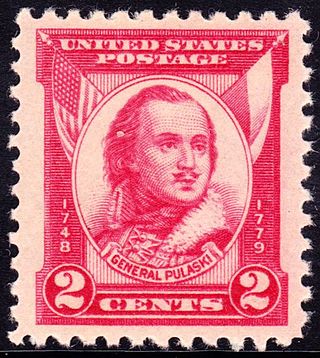
Casimir Pulaski was a Polish nobleman, soldier and military commander who has been called "the father of the American cavalry". He has had hundreds of monuments, memorial plaques, streets, parks and similar objects named after him.

Helena Modjeska Chase Johnson Drea was an artist, writer, poet, musician, photographer, and horsewoman. She had achievements as an illustrator of children's books and oil painter. Several of her books have been included in the Library of Congress collection.

The Jeffersontown Historical Museum is a neighborhood history museum in Jeffersontown, Kentucky. It details the history of Jeffersontown as it progressed from a small rural community with a town square to the city that it is today.



















